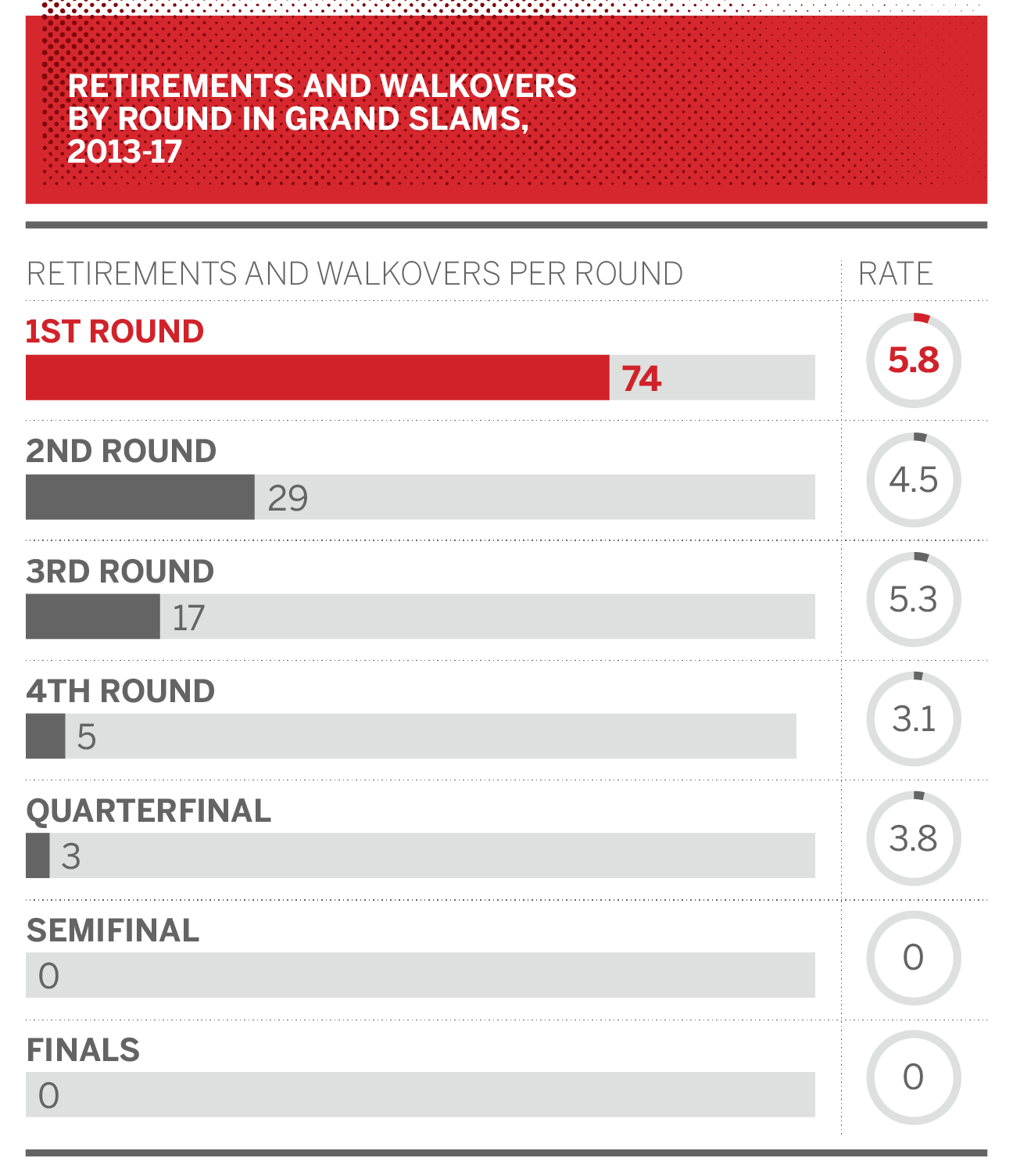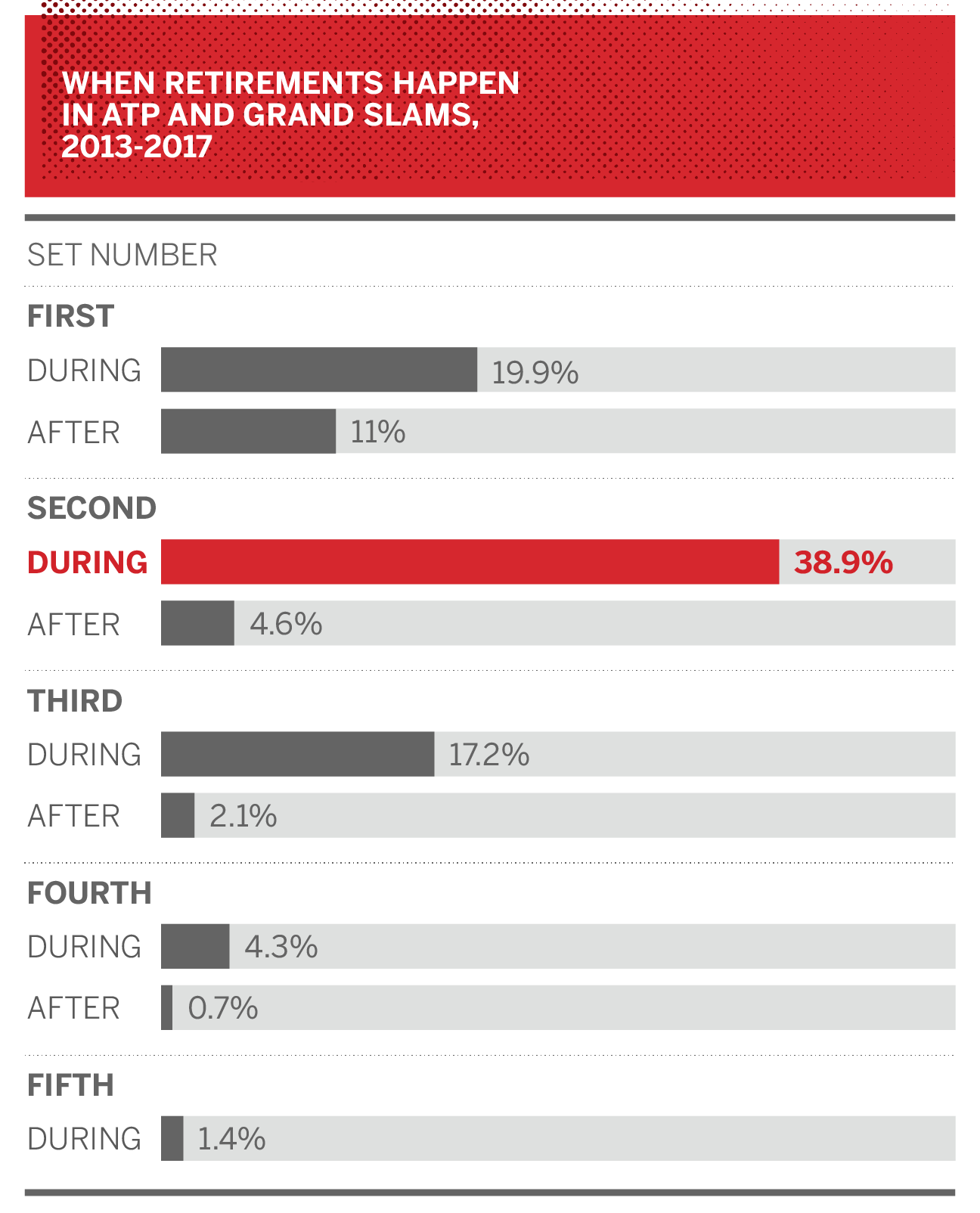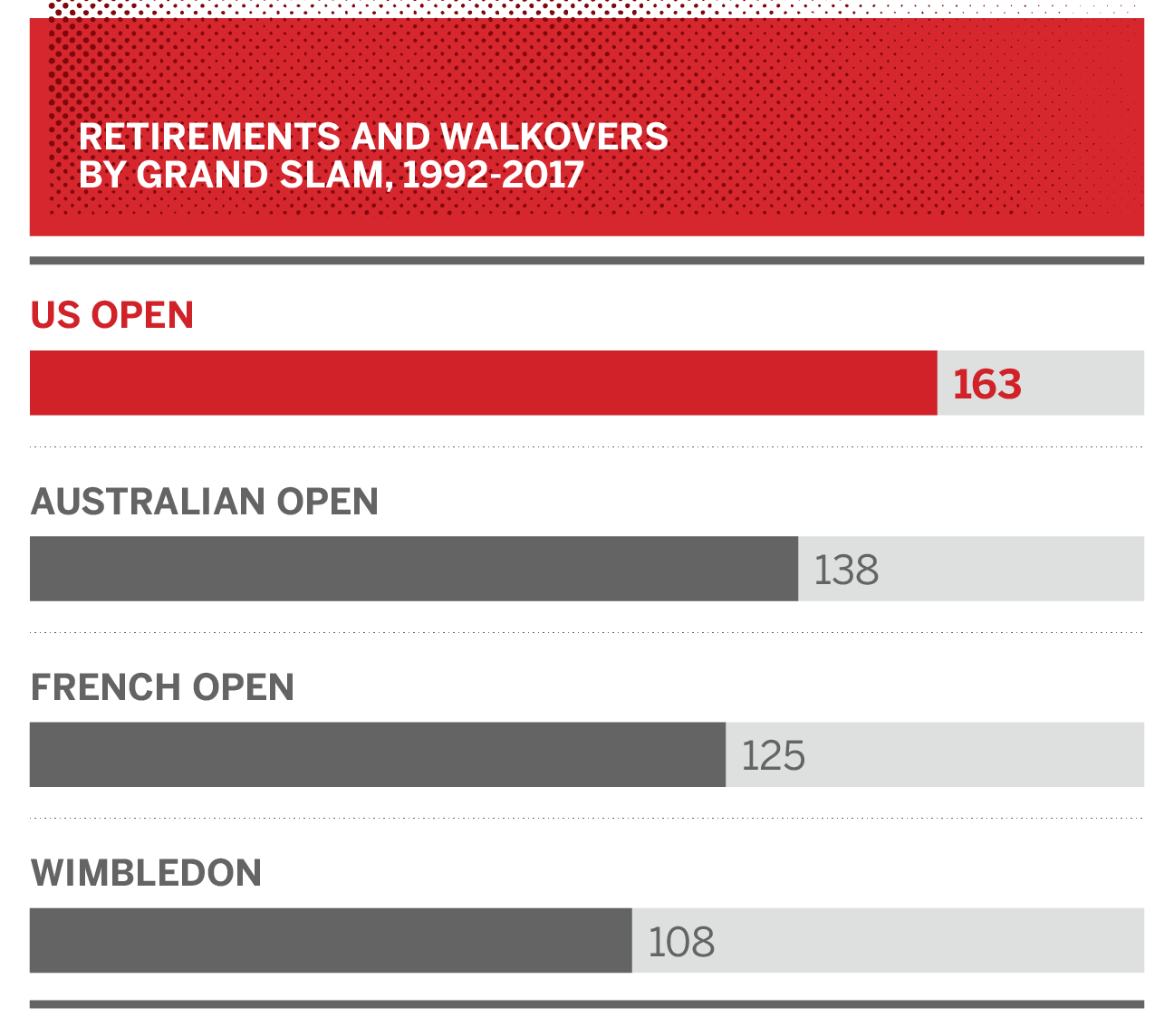It became a more familiar sight as the ATP season marched on this past year.
Whether it was Nick Kyrgios retiring early in the first round of Wimbledon (and a few other matches in 2017), or the lack of deep star power at the Tour Finals (there was Roger Federer and Rafael Nadal, and not really anyone else), retirements seemed to be the new norm.
In London, gone were Andy Murray and Novak Djokovic, the two top players in 2016. Gone too were Stan Wawrinka and Kei Nishikori, also top-five players from a season ago. Djokovic and Murray, in particular, skipped a good part of the season to manage injuries and fatigue. But the more glaring stat revolved around lower-ranked players -- those who don't pull in the same kind of cash as the top stars. Retiring mid-match increased, as did walkovers, a number that has doubled in Grand Slams over the past 25 years.
When Pete Sampras and Andre Agassi were beginning their ascent in 1992, withdrawals and retirements were rare. Just 13 players called it quits that season -- or 2.56 percent of the field. This year, there were 28 withdrawals/retirements at majors (5.51 percent).
Why the increased trend? We take a deeper look at the numbers:

It's a problem in early rounds
In the past five seasons, the most frequent time for players to retire came in the first round of Grand Slams. A total of 74 players withdrew with injury, nearly 20 more than the next four rounds combined.
But why?
Making the main draw and earning a first-round match means a paycheck -- win or lose. After the first round? Only winning a match yields additional prize money (although starting in 2018, the ATP has made some reforms to help negate this problem). Does the data show a "money grab" phenomenon, in which injured players qualify for the main draw, only to retire in the first round and take their paycheck? The first round has the most qualifiers -- those who have already played matches just to make the main draw -- so they're potentially more drained or injured.
But it's also the round with the most players on the fringe of making a living at professional tennis. Many of them need the money to keep their coach, their team or even to pay for their hotel in the most expensive cities in the world.

But factor in best-of-three matches on the ATP Tour, and the second set was the most popular time to retire. In the past five years, that frame accounts for 39 percent of players pulling out of major events. A possible reason: In shorter matches, players intuitively know that being down a set, and possibly a few games in the second, is an uphill battle and there's little reason to continue.

The US Open is the final Slam of the calendar year, and players might carry more wear and tear into the tournament from a long season.
Whatever the reason, that event is the venue that sees the most combined retirements and walkovers. The US Open is also the Slam with the highest escalation in prize money over the past 25 years -- and it has the most money period.

Who retires the most? Who doesn't?
Since 2013, Frenchman Paul-Henri Mathieu has retired 16 times, three more than any other player on tour. Mathieu played only 10 matches in 2017, and his ranking fell to No. 249 in the world. Martin Klizan and Kei Nishikori are tied for second in this category in that time frame, with 13 retirements each.
On the flip side, there's Federer. What more can we say about the all-time Slam king? He won two majors in 2017 and finished No. 2 in the world. But his winning numbers aside, perhaps the most impressive stat of them all might be the one most overlooked: He has never retired from a match in his 20 years navigating the tennis tour. While Federer has withdrawn in between rounds three times, in 1,382 matches on tour, he has never retired.
All stats courtesy of the ATP World Tour website and social media.
